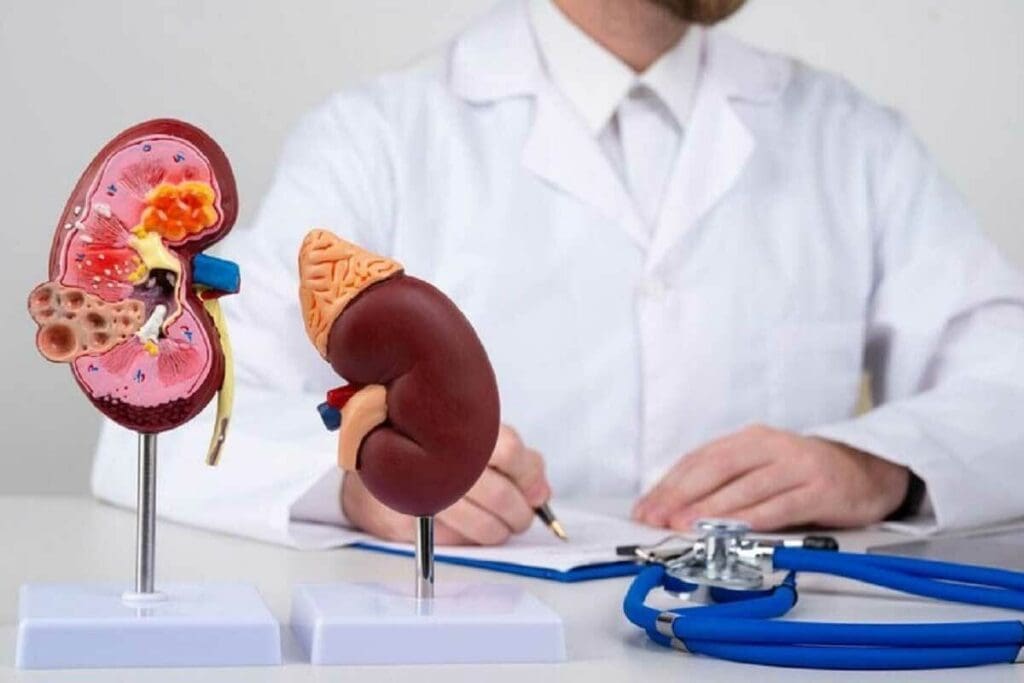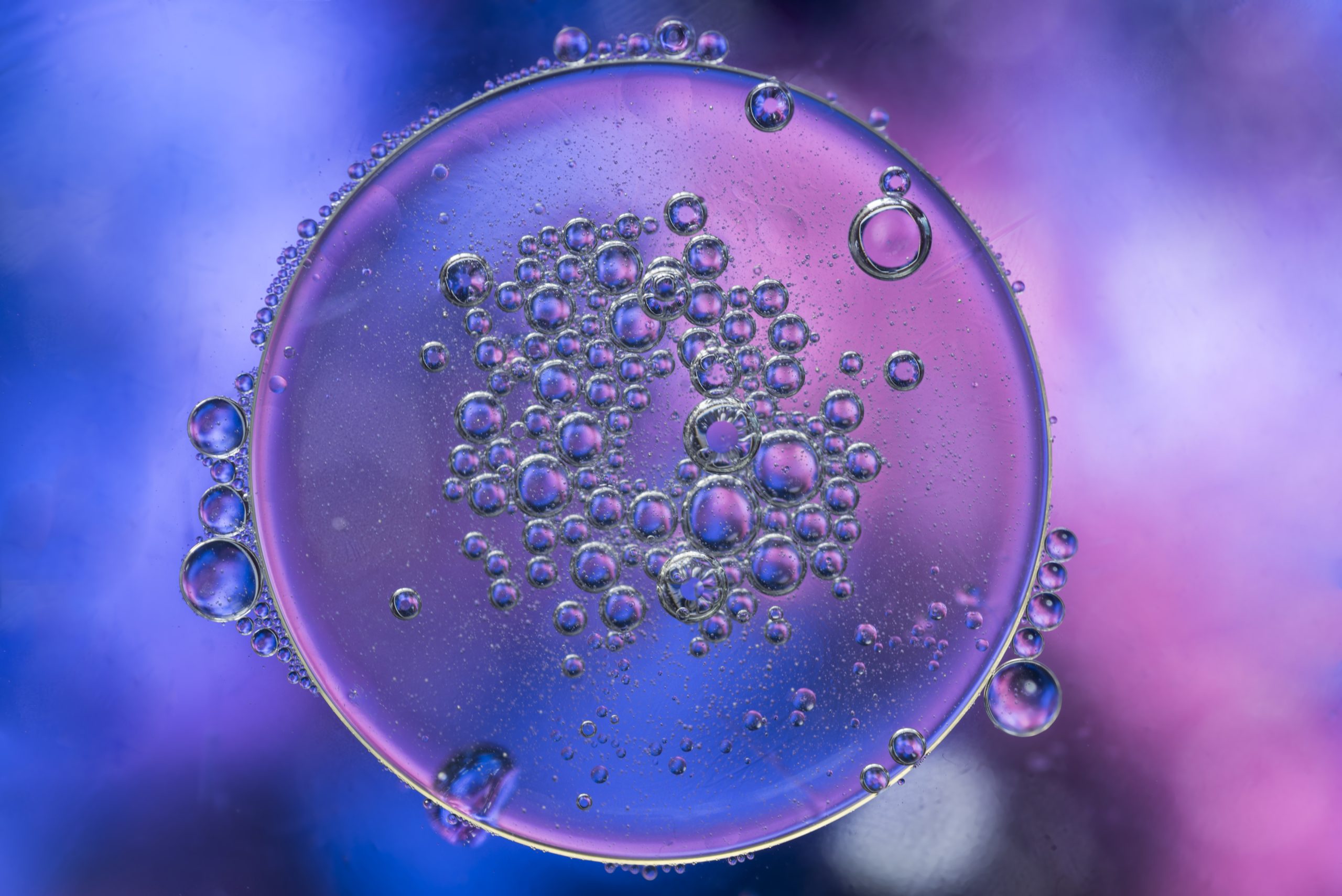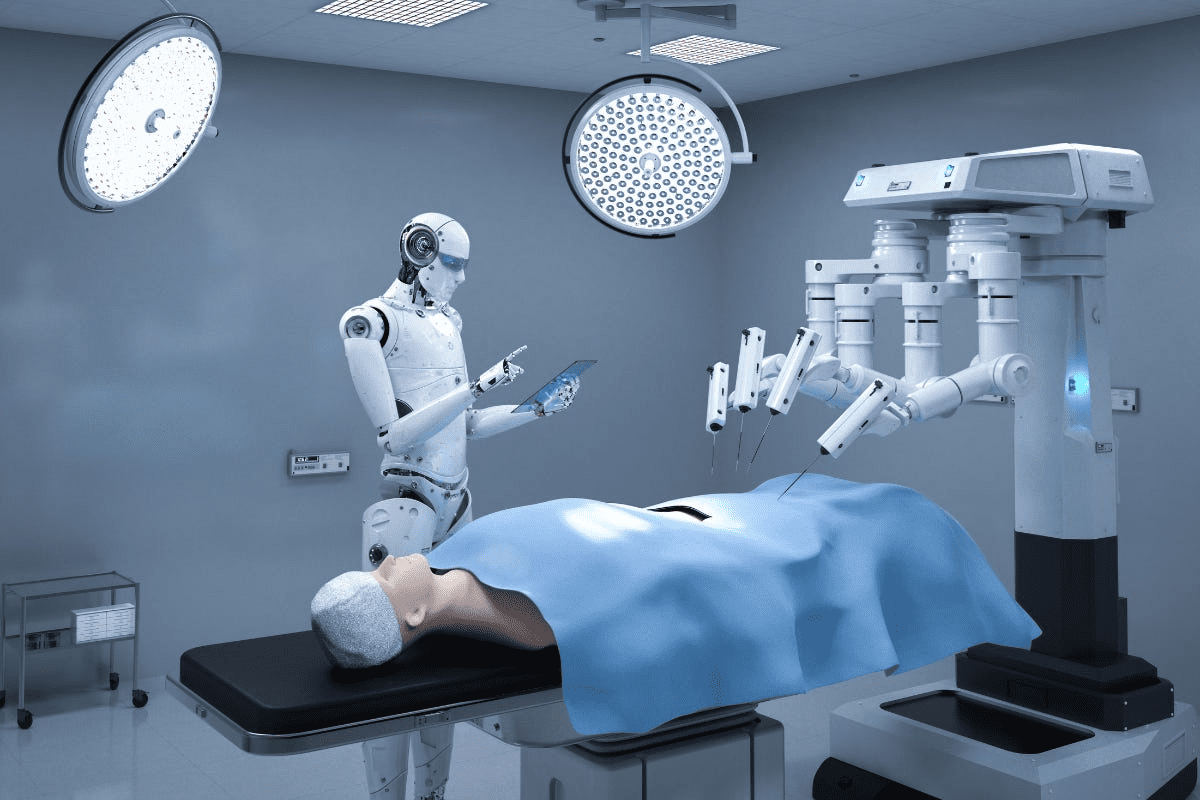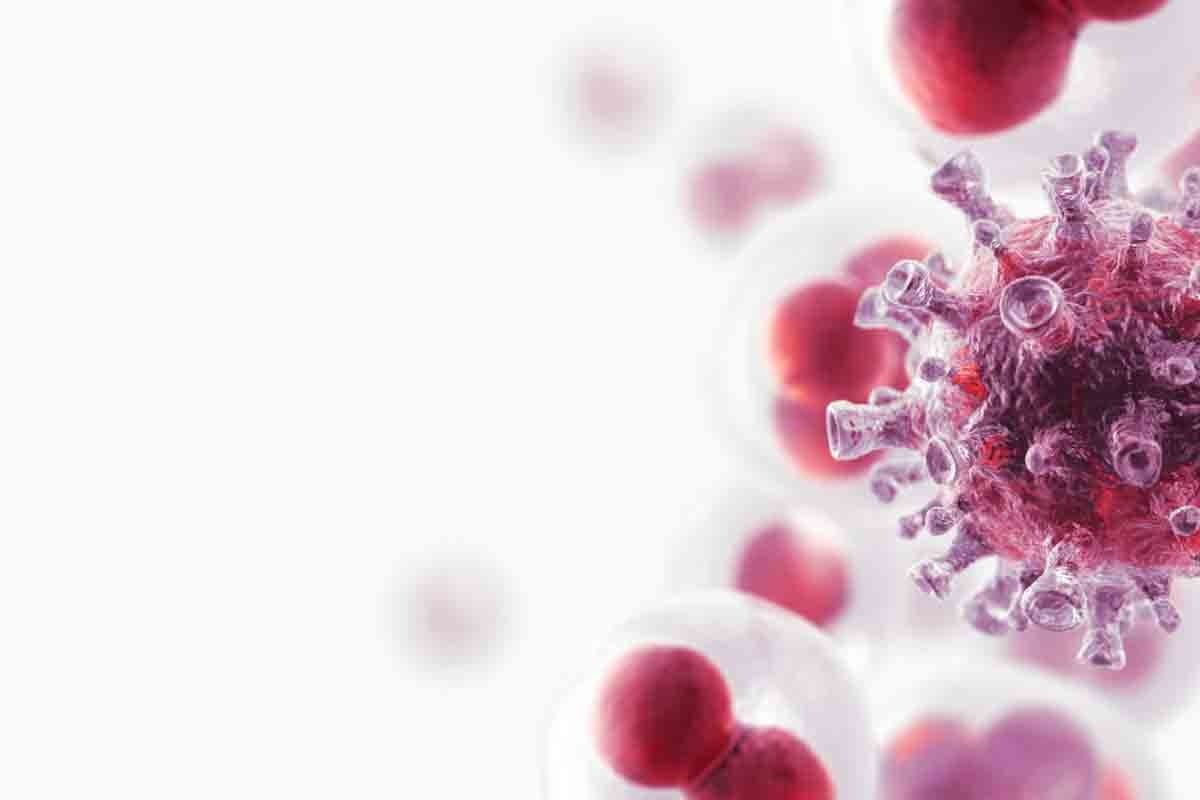Last Updated on November 27, 2025 by Bilal Hasdemir

At Liv Hospital, we use advanced tools to check kidney health. The renal scan procedure is one of them. It’s a special test that looks at how well your kidneys work, their shape, and how they drain.
A renal scan procedure is a test that uses a tiny bit of radioactive material, which is injected into your vein. Then, gamma cameras take pictures to show how your kidneys function. This test is safe, painless, and helps our team understand your kidney health better.
We put our patients first at Liv Hospital. Our renal scan procedures are top-notch. Our team’s expert analysis helps you get the best care possible.
Key Takeaways
- A renal scan is a nuclear medicine test that evaluates kidney function and structure.
- The procedure involves injecting a radiotracer into the bloodstream.
- Liv Hospital’s multidisciplinary team delivers accurate interpretations and enhances patient experience.
- Our patient-first approach ensures state-of-the-art renal scan procedures.
- Expert results interpretation helps patients achieve the best medical outcomes.
Understanding Renal Scans: An Overview

A renal scan, also known as a renogram, is a special imaging test. It checks how well the kidneys work and their structure. This test uses a small amount of radioactive material to make images of the kidneys.
We use renal scans to see how well the kidneys function. They help find urinary tract blockages and check on kidney transplants. The scan’s findings are key to treating kidney problems.
Definition and Purpose of Renal Scans
A renal scan is a nuclear medicine test that looks at the kidneys’ function and structure. Its main goal is to show how well the kidneys work. This includes their blood flow, how they filter, and how they drain.
The renogram is a medical term is the graphical display of the kidney’s function over time. It’s a vital part of the scan. This graph helps doctors see how each kidney is doing and spot any problems.
When Renal Scans Are Recommended
Renal scans are suggested for people with symptoms like high blood pressure, flank pain, less urine, or frequent urinary tract infections. They’re also for those with kidney transplants.
| Condition | Symptoms | Renal Scan Utility |
| Kidney Obstruction | Flank pain, reduced urine output | Diagnoses blockages in the urinary tract |
| Kidney Transplant | Monitoring post-transplant kidney function | Assesses the health and function of the transplanted kidney |
| Urinary Tract Infections | Recurrent infections | Helps identify underlying issues contributing to infections |
Knowing when to get a renal scan helps patients understand its importance in kidney health.
The Science Behind Renal Scan Procedures

To understand renal scans, we need to know about nuclear medicine and radiotracers. These scans use a small amount of radioactive material. They give detailed insights into how well the kidneys work and their health.
Nuclear Medicine and Radiotracers
Nuclear medicine is key in renal scans. It lets us see how the kidneys function. Radiotracers, tagged with a small amount of radioactive material, are used. When injected, they go to the kidneys, helping us see how they work through renal imaging.
The type of radiotracer used depends on what we want to know. Some are filtered by the kidneys, while others are secreted or retained. This helps doctors check different parts of kidney function, like blood flow and how well they filter waste.
How Gamma Cameras Visualize Kidney Function
Gamma cameras are used in nuclear medicine to detect the radiation from radiotracers. In a nuclear medicine scan of the kidneys, they take pictures of the kidneys. This shows how well they’re working and their structure.
The patient lies on a table while the gamma camera moves around them. It takes pictures from many angles. These pictures are then put together to show how the kidneys function. This can be seen as static images or a dynamic study showing how the radiotracer moves through the kidneys over time.
| Aspects of Kidney Function | Radiotracer Characteristic | Information Provided |
| Blood Flow | Rapid uptake and distribution | Assesses perfusion and vascular integrity |
| Filtration Efficiency | Rapid uptake and distribution | Evaluates glomerular filtration rate (GFR) |
| Drainage | Passage through the urinary tract | Identifies obstructions or delays in urine flow |
By using radiotracers and gamma cameras together, doctors can understand kidney function well. This is important for diagnosing and treating kidney problems. So, renal imaging is a key tool in kidney care.
Types of Renal Scan Procedures
There are many types of renal scan procedures. They help doctors find and fix kidney problems. Each scan is designed for a specific use and gives different information.
Standard Nuclear Renal Scans
Standard nuclear renal scans are key for checking how the kidneys work and look. They use tiny amounts of radioactive materials, or tracers, injected into the blood. These tracers send out gamma rays that a camera catches, showing the kidneys.
NM Renal Scans and Renal Kidney Scans
NM (Nuclear Medicine) renal scans and renal kidney scans mean the same thing as standard nuclear scans. They use the same tech to look at how kidneys function. These scans are great for checking blood flow, function, and how well the kidneys drain.
Lasix Renal Scans
Lasix renal scans, or diuretic renal scans, use Lasix (furosemide) during the test. It checks if the kidneys can make more urine when given a diuretic. This test is good for finding blockages and seeing how well kidneys work under stress.
The table below shows the main differences and uses of each renal scan type:
| Type of Scan | Primary Use | Key Features |
| Standard Nuclear Renal Scans | Assess kidney function and structure | Uses radiotracers to provide images of kidney anatomy and function |
| NM Renal Scans/Renal Kidney Scans | Evaluate renal blood flow, function, and drainage | Utilizes nuclear medicine technology to assess kidney function |
| Lasix Renal Scans | Diagnose obstructive uropathy and assess kidney function under stress | Involves the administration of Lasix to stimulate urine production |
Knowing about the different renal scan procedures helps doctors pick the best test for each patient. This leads to better diagnoses and treatment plans.
Preparing for Your Renal Scan Procedure
To get the most out of your renal scan, it’s essential to understand the preparation process. At Liv Hospital, we guide you through every step to ensure you’re well-prepared for the procedure.
Pre-Scan Instructions
Before undergoing a renal scan, there are several steps you can take to prepare. Staying hydrated is key, as it helps the radiotracer spread evenly in your body. We suggest drinking lots of water before the procedure.
Also, inform your doctor about any medications you’re currently taking, as well as any allergies you may have. This info helps us customize the procedure for you and reduce risks.
Medications and Dietary Considerations
Certain medications and dietary habits can impact your renal scan results. For example, caffeine and certain medications can affect kidney function. It’s vital to talk about your medications and diet with your doctor.
“Proper preparation is key to obtaining accurate and reliable results from your renal scan procedure.” – A nuclear medicine specialist
Here’s a summary of the key preparation steps:
| Preparation Step | Description |
| Stay Hydrated | Drink plenty of water before the procedure to help the radiotracer distribute evenly. |
| Inform Your Doctor | Disclose any medications you’re taking and any allergies you may have. |
| Dietary Considerations | Discuss your dietary habits with your doctor, as certain foods and beverages can affect kidney function. |
By following these guidelines and working closely with our medical team, you can ensure a smooth and successful renal scan procedure.
What to Expect During a Renal Scan Procedure
A renal scan is a simple test that checks how well your kidneys work. We know getting a test can make you nervous. So, we’re here to help you know what to expect during your renal scan.
Step-by-Step Process
The renal scan procedure has a few steps:
- You’ll lie on a table that’s comfy and can be adjusted.
- A special dye is injected into a vein in your arm. This dye helps us see your kidneys.
- A gamma camera is placed over your kidneys. It picks up the dye’s radiation.
- The camera takes pictures of your kidneys from different angles. This gives us detailed info about how they’re working.
Duration and Comfort Considerations
The scan usually takes 30 to 90 minutes. You’ll need to stay very quiet so the pictures are clear. We want you to be as comfortable as possible during this time.
Important things to remember:
- The test is not invasive and doesn’t hurt.
- Drinking water before and during the scan helps the dye move through your body.
- Our team is here to answer any questions or worries you have during the scan.
Knowing what to expect can help you feel more relaxed and ready for your renal scan.
The Role of Renograms in Kidney Assessment
The renogram is a key tool for checking kidney health. It shows how well kidneys work, helping us care for patients better.
What Is a Renogram in Medical Terms?
A renogram is a graph from a renal scan. It shows how kidneys take in and release substances. This graph is vital for seeing how the kidneys function. In simple terms, it’s a key test for kidney health.
Time-Activity Curves Explained
Time-activity curves are a big part of renograms. They show how kidneys handle substances over time. These curves help us see how well kidneys work, including how fast they take in and release substances.
Interpreting Renogram Patterns
Understanding renogram patterns is key to finding kidney problems. An abnormal renogram can point to many issues, like blockages or kidney damage. By looking at the curve’s shape, doctors can spot problems.
For example, a curve that peaks late and drains slowly might mean a blockage. A curve with low uptake and poor release could show kidney damage. Knowing these patterns helps us diagnose and treat kidney issues accurately.
Renal Scan Procedure Safety and Radiation Exposure
Renal scans are usually safe, but it’s important to know about radiation risks. At Liv Hospital, we make sure to keep risks low and ensure patients are safe.
Understanding Radiation Risks
Renal scans use small amounts of radioactive materials to check kidney function. Even though the radiation is low, it’s good to know the risks.
The dose from a renal scan is similar to that of other imaging tests like CT scans. But, the chance of harm from radiation is very small because of the low dose.
| Procedure | Effective Dose (mSv) | Risk Level |
| Renal Scan | 1-5 | Low |
| CT Scan (Abdomen) | 5-10 | Moderate |
| X-ray | 0.1-1 | Very Low |
Safety Measures and Precautions
To keep patients safe during renal scans, we follow strict rules:
- Careful patient selection and preparation
- Use of the minimum necessary dose of radiotracer
- Monitoring of the procedure in real-time
- Post-procedure care and follow-up
We also tell patients how to avoid spreading radiation to others. This is important for those who are breastfeeding or worried about radiation.
By knowing the safety steps and taking them, we can lower risks from renal scans. This way, our patients get the benefits of the test while staying safe.
Interpreting Renal Scan Results
Understanding renal scan results is key. We explain what normal and abnormal findings mean. This helps you grasp kidney function and possible disorders.
Normal vs. Abnormal Findings
Renal scan results show if your kidneys are working properly. Normal scans show that both kidneys take in and release the tracer evenly. But if there’s an issue, like a blockage or poor function, the scan will show it.
We check a few things when looking at scan results:
- The speed at which the kidneys take in the tracer.
- How fast does the tracer peak and then leave the kidneys.
- If one kidney is working differently from the other.
- Signs of blockage or other problems.
Understanding Abnormal Renogram Patterns
An abnormal renogram can point to kidney issues. For example, if the tracer takes too long to peak or stays too long, it might mean there’s a blockage. We look at these patterns to find out what’s wrong with your kidneys.
Some common issues seen in renograms include:
- Obstructive pattern: This shows up as a slow peak and long tracer stay.
- Impaired renal function: This is seen as less uptake and slower tracer release.
- Non-obstructive dilatation: This has a normal or slightly slow peak, with normal or slightly long tracer release.
For more details on renogram patterns, check out the National Center for Biotechnology Information.
Quantitative Measurements in Renal Scans
Quantitative measurements are vital in reading renal scans. They help us measure kidney function and spot various conditions. Key measurements include:
- Split renal function: This shows how much each kidney is working, as a percentage.
- Renal clearance: This is how fast the kidneys remove the tracer from the blood.
- Cortical transit time: This is how long it takes for the tracer to go through the kidney’s cortex.
By combining these numbers with what we see on the scan, we get a full picture of your kidney health. This helps us find any problems.
Common Conditions Diagnosed with Renal Scans
We use renal scans to find and treat many kidney problems. These scans are key in spotting issues that affect how well the kidneys work and our overall health.
Urinary Tract Obstruction
Renal scans are great for finding urinary tract blockages. These blockages can be very painful and can get worse if not treated.
Symptoms of urinary tract obstruction may include:
- Pain in the flank or abdomen
- Difficulty urinating
- Frequent urinary tract infections
These scans let us see where the blockage is and how it’s affecting the kidneys. The Lasix renal scan is very helpful here. It checks how the kidneys react to certain medicines.
| Condition | Renal Scan Findings | Clinical Implication |
| Urinary Tract Obstruction | Delayed drainage, hydronephrosis | Potential for kidney damage if untreated |
| Renal Function Impairment | Reduced renal uptake, poor function | May indicate chronic kidney disease |
| Kidney Disorders | Abnormal scan patterns | Requires further investigation |
Renal Function Impairment
Renal scans are also key in checking how well the kidneys are working. They look at how the kidneys take in and get rid of the scan material. This tells us how well the kidneys are functioning.
Factors that may contribute to renal function impairment include:
- Diabetes
- Hypertension
- Chronic kidney disease
Other Kidney Disorders
Renal scans can also spot other kidney issues. This includes things like kidney stones, cysts, or tumors.
By using these scans, we can give accurate diagnoses. Then, we can create treatment plans that fit each patient’s needs.
Comparing Renal Scans with Other Kidney Imaging Methods
Several imaging methods are used to diagnose kidney issues. Liv Hospital uses different tools for a complete care plan. We will look at renal scans, CT scans, and ultrasound to see their differences and uses.
Renal Scans vs. CT Scans
Renal scans and CT scans are both useful, but for different reasons. A renal CT scan shows detailed kidney structures. It helps find structural problems. On the other hand, a renal scan checks how well the kidneys work and if there are blockages.
Renal scans give insights into kidney function and blockages. CT scans, though, show detailed kidney anatomy. The choice between them depends on what the doctor needs to know.
| Imaging Method | Primary Use | Key Benefits |
| Renal Scan | Assessing kidney function and obstruction | Provides functional information, non-invasive |
| CT Scan | Detailed anatomical imaging | High-resolution images, quick procedure |
Renal Scans vs. Ultrasound
Ultrasound is also used to check kidney health. It’s good for measuring kidney size, finding cysts or tumors, and guiding biopsies. Unlike renal scans, ultrasound doesn’t use radiation or contrast agents, making it safer for some patients.
But, ultrasound doesn’t give the same functional info as a renal scan. It’s mainly used for looking at kidney structure, not function.
When Each Imaging Method Is Preferred
The right imaging method depends on the situation. For example, a renal scan is best for checking kidney function or finding blockages. A CT scan is better for detailed anatomy, like with kidney stones or tumors.
Knowing each method’s strengths and weaknesses helps doctors choose the best for patients. At Liv Hospital, our team picks the best imaging for each case.
Multidisciplinary Approach to Renal Scan Interpretation
Renal scan analysis needs experts from various fields. At Liv Hospital, we know it’s a team effort. Radiologists, nephrologists, and others work together.
Specialized Expertise in Renal Scan Interpretation
A team approach means better accuracy in renal scan results. Our team has a lot of experience in nuclear medicine and kidney care. This helps us give detailed diagnoses and treatment plans for each patient.
A study on the National Center for Biotechnology Information (NCBI) website shows how important accurate scans are. It helps diagnose kidney problems. You can read the study here.
Updated Protocols and Teamwork in Result Analysis
We keep our methods up to date with new technology and techniques. Our team works together to review scan results. This ensures every diagnosis is backed by expert agreement.
The table below shows what our team approach includes:
| Component | Description | Benefit |
| Specialized Expertise | Team of radiologists and nephrologists | Accurate diagnoses |
| Updated Protocols | Latest advancements in renal scan technology | Enhanced precision |
| Teamwork | Collaborative analysis of scan results | Comprehensive care |
At Liv Hospital, we use a team approach for better care and accurate diagnoses. This is for patients getting renal scans.
Conclusion
At Liv Hospital, we’ve looked into how important renal scan procedures are for checking kidney health. These scans are key in understanding how well the kidneys work and spotting any problems.
Learning about the science behind renal scans helps us see how complex kidney checks are. Our team is dedicated to top-notch healthcare and support for patients getting renal scans.
Renal scans are vital for finding and treating kidney issues. Thanks to our skilled team and modern facilities at Liv Hospital, patients get precise diagnoses and effective treatments.
FAQ
What is a renal scan procedure?
A renal scan is a test that uses a tiny amount of radioactive material. It helps see how the kidneys work.
Why is a renal scan recommended?
It’s suggested for those with flank pain, less urine, or UTIs. It checks kidney function and finds blockages.
How do I prepare for a renal scan procedure?
Liv Hospital’s team will give you specific instructions. This might include what to eat and any meds to stop taking.
What happens during a renal scan procedure?
A tiny amount of radioactive material is injected. Then, cameras take pictures of your kidneys. It’s done in a special room, and we make sure you’re comfortable.
What are the different types of renal scan procedures?
There are several types, like standard and Lasix scans. Each gives different info about your kidneys.
Is a renal scan procedure safe?
Yes, Liv Hospital takes steps to keep you safe. This includes reducing radiation exposure.
How are renal scan results interpreted?
Our team will explain your results. They might show normal or abnormal findings. We’ll talk about what it means for your kidneys.
What is a renogram, and how is it used in kidney assessment?
A renogram shows how well your kidneys are working. It helps find problems and check the function. We’ll look at the patterns and share what they mean for your health.
How does a renal scan compare to other kidney imaging methods?
We compare renal scans to CT scans and ultrasound. We’ll tell you which is best for your situation.
What are the benefits of a multidisciplinary approach to renal scan interpretation?
At Liv Hospital, we use a team approach. This means more accurate diagnoses and better care for you.
What are the common conditions diagnosed with renal scans?
Renal scans find issues like blockages and kidney problems. They help us understand how your kidneys are doing.
How long does a renal scan procedure take?
The time varies. But we make sure you’re comfortable and the process goes smoothly.
Are there any dietary restrictions before a renal scan?
Yes, we’ll tell you what to eat and drink before the scan. This helps us get the best images.
References
- Taylor, A. T., Nally, J., Aurell, M., et al. (2018). SNMMI Procedure Standard / EANM Practice Guideline for Diuretic Renal Scintigraphy in Adults With Suspected Upper Urinary Tract Obstruction. Seminars in Nuclear Medicine, 48(4), S1–S35. https://pmc.ncbi.nlm.nih.gov/articles/PMC6020824/
- Majd, M., Taylor, A. T., & Nally, J. (2018). The SNMMI and EANM Procedural Guidelines for Diuresis Renography. Journal of Nuclear Medicine, 59(4), 555–574. https://pmc.ncbi.nlm.nih.gov/articles/PMC6167528/






